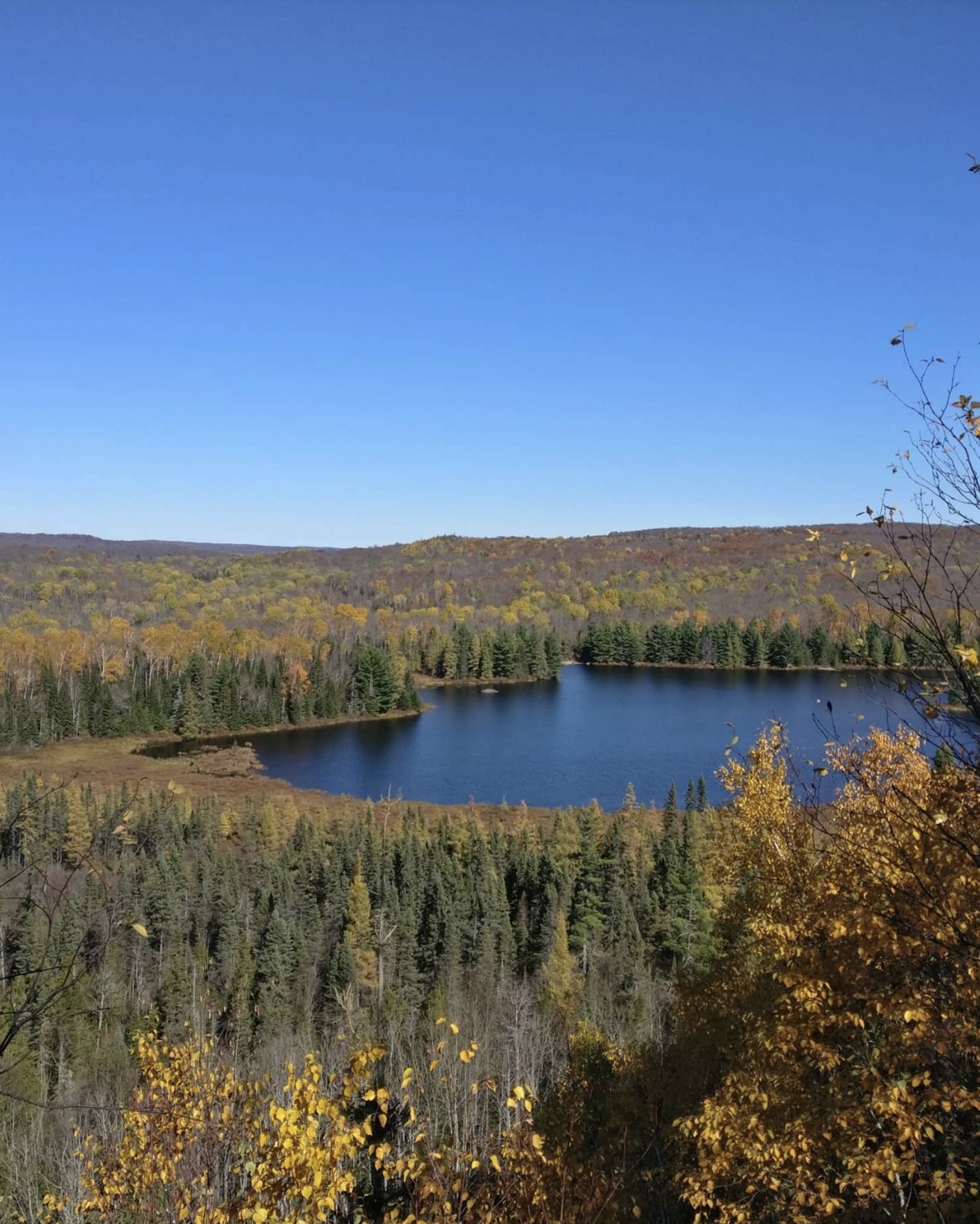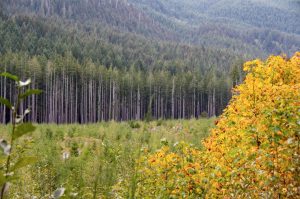 Despite persistently high mortgage rates, elevated financing costs for builders, and a shortage of buildable lots, single-family starts rebounded in 2024, following two straight years of declines. According to the NAHB analysis of the 2024 Survey of Construction (SOC), a total of 1,009,315 new single-family units started construction nationwide. This is a 7% increase compared to 2023. Among the nine Census divisions, the South Atlantic division led the nation with 344,313 starts in 2024, representing a 34% share. The second highest was the West South Central division at 187,690 starts, followed by the Mountain division with 125,911 starts. …Meanwhile, there were 99,166 new single-family units started in the Pacific division (10% of total starts) and 81,106 in the East North Central division (8%) in 2024. The other four divisions, including East South Central, West North Central, Middle Atlantic, and New England, accounted for the remaining 17% of the total new single-family housing starts.
Despite persistently high mortgage rates, elevated financing costs for builders, and a shortage of buildable lots, single-family starts rebounded in 2024, following two straight years of declines. According to the NAHB analysis of the 2024 Survey of Construction (SOC), a total of 1,009,315 new single-family units started construction nationwide. This is a 7% increase compared to 2023. Among the nine Census divisions, the South Atlantic division led the nation with 344,313 starts in 2024, representing a 34% share. The second highest was the West South Central division at 187,690 starts, followed by the Mountain division with 125,911 starts. …Meanwhile, there were 99,166 new single-family units started in the Pacific division (10% of total starts) and 81,106 in the East North Central division (8%) in 2024. The other four divisions, including East South Central, West North Central, Middle Atlantic, and New England, accounted for the remaining 17% of the total new single-family housing starts.
 In celebration of Canada Day, the Tree Frog News team is taking a short break on Monday. We’ll return to our lily pad bright and early Wednesday morning with your full dose of forestry news and insight.
In celebration of Canada Day, the Tree Frog News team is taking a short break on Monday. We’ll return to our lily pad bright and early Wednesday morning with your full dose of forestry news and insight.
 President Donald Trump’s trade war risks reigniting next week when a
President Donald Trump’s trade war risks reigniting next week when a 
 WASHINGTON — Sen. Mike Lee, R-Utah, said late Saturday that he had dropped his contentious plan to sell millions of acres of public lands from the sweeping domestic policy package that the Senate will soon begin debating. Lee made the announcement on social media after it became clear that the plan faced insurmountable opposition from within his own party. At least four Republican senators from Western states had said they planned to vote for an amendment to strike the proposal from the bill. The plan had also triggered intense pushback from conservative hunters and outdoorsmen across the American West, who had warned that it threatened the lands where they hunted and fished. …Lee said that, because of the strict rules governing the budgetary process … he was “unable to secure clear, enforceable safeguards to guarantee that these lands would be sold only to American families — not to any foreign interests.”
WASHINGTON — Sen. Mike Lee, R-Utah, said late Saturday that he had dropped his contentious plan to sell millions of acres of public lands from the sweeping domestic policy package that the Senate will soon begin debating. Lee made the announcement on social media after it became clear that the plan faced insurmountable opposition from within his own party. At least four Republican senators from Western states had said they planned to vote for an amendment to strike the proposal from the bill. The plan had also triggered intense pushback from conservative hunters and outdoorsmen across the American West, who had warned that it threatened the lands where they hunted and fished. …Lee said that, because of the strict rules governing the budgetary process … he was “unable to secure clear, enforceable safeguards to guarantee that these lands would be sold only to American families — not to any foreign interests.” VANCOUVER, British Columbia – Western Forest Products announced today that the sawmill at its Columbia Vista Division, located in Vancouver, Washington, sustained extensive damage in a fire, rendering the mill inoperable. “On behalf of Western, I want to extend my sincere gratitude to the firefighters and first responders who attended the fire at our site,” said Steven Hofer, Western’s President and CEO. “While we are shocked by the damage to the mill, we feel incredibly fortunate that no employees or emergency personnel were injured. We are focused on supporting our team members and completing an incident investigation and assessment.” The Columbia Vista Division produced approximately 53 million board feet of lumber in 2024, with production focused on Douglas Fir specialty products for Japan and U.S. markets.
VANCOUVER, British Columbia – Western Forest Products announced today that the sawmill at its Columbia Vista Division, located in Vancouver, Washington, sustained extensive damage in a fire, rendering the mill inoperable. “On behalf of Western, I want to extend my sincere gratitude to the firefighters and first responders who attended the fire at our site,” said Steven Hofer, Western’s President and CEO. “While we are shocked by the damage to the mill, we feel incredibly fortunate that no employees or emergency personnel were injured. We are focused on supporting our team members and completing an incident investigation and assessment.” The Columbia Vista Division produced approximately 53 million board feet of lumber in 2024, with production focused on Douglas Fir specialty products for Japan and U.S. markets.

 Simon Varney pre-ordered extra hardwood from Canada in February when President Donald Trump threatened broad 25 percent import tariffs on goods from that country. The next month, the administration exempted that wood. That left Varney, co-owner of Wells Wood Turning & Finishing in Buckfield, spending more money ahead of time and holding onto extra inventory, eating into cash flow. Ironically, the pearlescent gold pigment the company purchased from its Vermont supplier to make its famous wooden eggs for the White House Easter Egg Roll — a color specifically requested by the president in both of his terms in office — had to be imported from Germany and falls under Trump’s tariffs. “The tariffs were a real concern because they basically would raise our wood costs by 25 percent, which is pretty significant,” Varney said. “The wood manufacturing business is not a high margin or high profitability business.”
Simon Varney pre-ordered extra hardwood from Canada in February when President Donald Trump threatened broad 25 percent import tariffs on goods from that country. The next month, the administration exempted that wood. That left Varney, co-owner of Wells Wood Turning & Finishing in Buckfield, spending more money ahead of time and holding onto extra inventory, eating into cash flow. Ironically, the pearlescent gold pigment the company purchased from its Vermont supplier to make its famous wooden eggs for the White House Easter Egg Roll — a color specifically requested by the president in both of his terms in office — had to be imported from Germany and falls under Trump’s tariffs. “The tariffs were a real concern because they basically would raise our wood costs by 25 percent, which is pretty significant,” Varney said. “The wood manufacturing business is not a high margin or high profitability business.” VANCOUVER, BC – Canfor announced today its decision to permanently close the Estill and Darlington sawmills in South Carolina, effective August 2025. These closures follow an extended period of persistently weak market conditions and sustained financial losses, which have made continued operations at these facilities no longer viable. “We understand the significant impact this difficult decision will have on our employees,” said Lee Goodloe, President, Canfor Southern Pine. “This outcome is in no way a reflection of the dedication and hard work of our teams. We are committed to supporting our employees through this transition, including providing severance payments and exploring opportunities for redeployment within our other operations where possible.” Approximately 290 employees will be affected by the closures, which will also reduce Canfor’s U.S. lumber production capacity by 350 million board feet annually.
VANCOUVER, BC – Canfor announced today its decision to permanently close the Estill and Darlington sawmills in South Carolina, effective August 2025. These closures follow an extended period of persistently weak market conditions and sustained financial losses, which have made continued operations at these facilities no longer viable. “We understand the significant impact this difficult decision will have on our employees,” said Lee Goodloe, President, Canfor Southern Pine. “This outcome is in no way a reflection of the dedication and hard work of our teams. We are committed to supporting our employees through this transition, including providing severance payments and exploring opportunities for redeployment within our other operations where possible.” Approximately 290 employees will be affected by the closures, which will also reduce Canfor’s U.S. lumber production capacity by 350 million board feet annually. When you think about Indiana’s ag industry, you might not think about hardwoods and lumber, which play a huge role in the state’s economy. Indiana’s hardwood industry has an annual economic impact of over $10 billion to the state’s economy. In fact, Indiana is the number one producer of wooden hardwood and office furniture in the US. Indiana’s hardwood sector also ranks: 2nd in wood kitchen cabinets and countertops, manufactured homes, 3rd in engineered wood products, 4th in pre-fabricated wood buildings, and 5th in upholstered household furniture. Much of the lumber that is harvested and used here in Indiana comes from private woodland owners. “There’s over 4.5 million acres of forest land in Indiana, and of that 85 percent of that is privately owned, so there are a lot of farmers and families who own forest land,” says Tyler Smith, Sales Manager of Cole Hardwood in Logansport.
When you think about Indiana’s ag industry, you might not think about hardwoods and lumber, which play a huge role in the state’s economy. Indiana’s hardwood industry has an annual economic impact of over $10 billion to the state’s economy. In fact, Indiana is the number one producer of wooden hardwood and office furniture in the US. Indiana’s hardwood sector also ranks: 2nd in wood kitchen cabinets and countertops, manufactured homes, 3rd in engineered wood products, 4th in pre-fabricated wood buildings, and 5th in upholstered household furniture. Much of the lumber that is harvested and used here in Indiana comes from private woodland owners. “There’s over 4.5 million acres of forest land in Indiana, and of that 85 percent of that is privately owned, so there are a lot of farmers and families who own forest land,” says Tyler Smith, Sales Manager of Cole Hardwood in Logansport.


 Mass timber is transforming how America builds—but supply hasn’t kept pace with demand. A gap in domestic manufacturing has slowed widespread adoption, leaving many developers with few options beyond overseas suppliers or traditional steel and concrete. Through strategic support from the USDA Forest Service Wood Innovations Program, the Forest Service is helping close that gap—boosting U.S. capacity, strengthening rural economies and growing new markets for American wood. One partner answering the call is SmartLam North America. Mass timber products like cross-laminated timber (CLT) and glued laminated timber (glulam) offer a carbon-storing, renewable alternative to conventional building materials. But even as the benefits are clear—strength, fire resistance, design flexibility—developers have faced supply constraints. Limited domestic production has slowed construction timelines, raised costs and stifled innovation.
Mass timber is transforming how America builds—but supply hasn’t kept pace with demand. A gap in domestic manufacturing has slowed widespread adoption, leaving many developers with few options beyond overseas suppliers or traditional steel and concrete. Through strategic support from the USDA Forest Service Wood Innovations Program, the Forest Service is helping close that gap—boosting U.S. capacity, strengthening rural economies and growing new markets for American wood. One partner answering the call is SmartLam North America. Mass timber products like cross-laminated timber (CLT) and glued laminated timber (glulam) offer a carbon-storing, renewable alternative to conventional building materials. But even as the benefits are clear—strength, fire resistance, design flexibility—developers have faced supply constraints. Limited domestic production has slowed construction timelines, raised costs and stifled innovation.

 A decade-spanning political battle between housing developers and defenders of California’s preeminent environmental law likely came to an end this afternoon with only a smattering of “no” votes. The forces of housing won. With the passage of a state budget-related housing bill, the California Environmental Quality Act will be a non-issue for a decisive swath of urban residential development in California. In practice, that means most new apartment buildings will no longer face the open threat of environmental litigation. It also means most urban developers will no longer have to study, predict and mitigate the ways that new housing might affect local traffic, air pollution, flora and fauna, noise levels, groundwater quality and objects of historic or archeological significance. And it means that when housing advocates argue that the state isn’t doing enough to build more homes amid crippling rents and stratospheric prices, they won’t — with a few exceptions — have CEQA to blame anymore.
A decade-spanning political battle between housing developers and defenders of California’s preeminent environmental law likely came to an end this afternoon with only a smattering of “no” votes. The forces of housing won. With the passage of a state budget-related housing bill, the California Environmental Quality Act will be a non-issue for a decisive swath of urban residential development in California. In practice, that means most new apartment buildings will no longer face the open threat of environmental litigation. It also means most urban developers will no longer have to study, predict and mitigate the ways that new housing might affect local traffic, air pollution, flora and fauna, noise levels, groundwater quality and objects of historic or archeological significance. And it means that when housing advocates argue that the state isn’t doing enough to build more homes amid crippling rents and stratospheric prices, they won’t — with a few exceptions — have CEQA to blame anymore. Researchers in the Department of Forest Biomaterials are developing a proprietary material that could serve as a sustainable alternative to one of the world’s most significant sources of pollution: plastic foam. “Our material eliminates polystyrene foam materials that are filling landfills and persisting as litter in the environment,” said Richard Venditti, the Elis-Signe Olsson Professor of Pulp and Paper Science and Engineering. Plastic foam, often known by the brand name Styrofoam, is used in many everyday products — from disposable food and beverage containers like cups and plates to shipping materials such as packing peanuts and protective packaging. While convenient, plastic foam presents a significant environmental challenge due to its lack of biodegradability and difficulty in recycling. Estimates indicate that plastic foam takes up to 30% of landfill space globally.
Researchers in the Department of Forest Biomaterials are developing a proprietary material that could serve as a sustainable alternative to one of the world’s most significant sources of pollution: plastic foam. “Our material eliminates polystyrene foam materials that are filling landfills and persisting as litter in the environment,” said Richard Venditti, the Elis-Signe Olsson Professor of Pulp and Paper Science and Engineering. Plastic foam, often known by the brand name Styrofoam, is used in many everyday products — from disposable food and beverage containers like cups and plates to shipping materials such as packing peanuts and protective packaging. While convenient, plastic foam presents a significant environmental challenge due to its lack of biodegradability and difficulty in recycling. Estimates indicate that plastic foam takes up to 30% of landfill space globally. 
 The hills of Louis Creek Valley are covered in lovely, towering Douglas fir, healthy evergreens climbing from the grassy meadow at the valley floor up to the ridges where the mountains meet the sky. It’s lush, like much of interior British Columbia, where densely packed conifers line the innumerable wooded valleys, the heavy cone-laden branches reaching down to the ground. Joe Gilchrist, a fire steward of Secwepemc people, and a firefighter for more than 30 years, stands on the valley floor and looks at the beautiful trees. But what he sees first is danger. “It’s been over 100 years since it’s been illegal for Indigenous people to use fire on the land, and so in that time, the trees have overgrown the area, and some of the trees have got diseased,” he says.
The hills of Louis Creek Valley are covered in lovely, towering Douglas fir, healthy evergreens climbing from the grassy meadow at the valley floor up to the ridges where the mountains meet the sky. It’s lush, like much of interior British Columbia, where densely packed conifers line the innumerable wooded valleys, the heavy cone-laden branches reaching down to the ground. Joe Gilchrist, a fire steward of Secwepemc people, and a firefighter for more than 30 years, stands on the valley floor and looks at the beautiful trees. But what he sees first is danger. “It’s been over 100 years since it’s been illegal for Indigenous people to use fire on the land, and so in that time, the trees have overgrown the area, and some of the trees have got diseased,” he says.  The clock is ticking to register and make plans for the 38th Forest Products Machinery & Equipment EXPO from August 6-8 in Nashville, and you do not want to miss it! EXPO is the epicenter of the entire wood products manufacturing sector – held only every other year – with numerous exhibitors showcasing state-of-the-art machinery and specialized services designed for the forest products industry. This event brings together thousands of industry leaders and decision-makers eager to explore cutting-edge products and solutions, spanning advancements in hardwood and softwood log processing, remanufacturing, pallet industries, bioenergy, engineered wood products, and pressure treatment. Seize this unparalleled opportunity to explore new machinery, engage with key decision-makers, reimagine your sawmill operations, and propel your business to new heights.
The clock is ticking to register and make plans for the 38th Forest Products Machinery & Equipment EXPO from August 6-8 in Nashville, and you do not want to miss it! EXPO is the epicenter of the entire wood products manufacturing sector – held only every other year – with numerous exhibitors showcasing state-of-the-art machinery and specialized services designed for the forest products industry. This event brings together thousands of industry leaders and decision-makers eager to explore cutting-edge products and solutions, spanning advancements in hardwood and softwood log processing, remanufacturing, pallet industries, bioenergy, engineered wood products, and pressure treatment. Seize this unparalleled opportunity to explore new machinery, engage with key decision-makers, reimagine your sawmill operations, and propel your business to new heights.
 The U.S. Forest Service has proposed lifting the rule that bars roads in designated wilderness areas. The change could open 1.2 million acres of federal land in Arizona to logging. Agriculture Secretary Brooke Rollins proposed canceling the 25-year-old “roadless rule” that created some 58 million acres of wilderness areas throughout the west. Arizona’s forested wilderness areas come to about 1.2 million acres of the 11 million acres of Forest Service land in Arizona. …Environmental groups immediately decried the proposal. They said it would increase the danger of wildfires and destroy wilderness areas essential to wildlife and many forms of recreation. …However, a century of logging, cattle grazing and fire suppression has dramatically increased tree densities across forested Northern Arizona … from about 50 per acre to more like 1,000 per acre in the past century. …The Four Forests Restoration Initiative has tried and mostly failed to ramp up logging on six million acres of non protected forest already criss-crossed with roads.
The U.S. Forest Service has proposed lifting the rule that bars roads in designated wilderness areas. The change could open 1.2 million acres of federal land in Arizona to logging. Agriculture Secretary Brooke Rollins proposed canceling the 25-year-old “roadless rule” that created some 58 million acres of wilderness areas throughout the west. Arizona’s forested wilderness areas come to about 1.2 million acres of the 11 million acres of Forest Service land in Arizona. …Environmental groups immediately decried the proposal. They said it would increase the danger of wildfires and destroy wilderness areas essential to wildlife and many forms of recreation. …However, a century of logging, cattle grazing and fire suppression has dramatically increased tree densities across forested Northern Arizona … from about 50 per acre to more like 1,000 per acre in the past century. …The Four Forests Restoration Initiative has tried and mostly failed to ramp up logging on six million acres of non protected forest already criss-crossed with roads. More than half a million acres of trees spread across Washington were sick, struggling, or dead last year, according to the results of an aerial survey of forests by the state’s Department of Natural Resources. Surveyors identified about 545,000 acres with some level of tree mortality, defoliation, or disease, the department said this week. That’s less than 1% of the total forestland surveyed. The amount of forest with problems is up nearly 30,000 acres from 2023 and more than the 10-year average of 519,000 acres, but well below the acres mapped with diseased or dead trees in 2022, according to the Department of Natural Resources. The Department of Natural Resources and the U.S. Forest Service partnered to conduct an aerial survey of 22 million forested acres in Washington state to observe recently killed and damaged trees. They carried out the survey between June and September last year.
More than half a million acres of trees spread across Washington were sick, struggling, or dead last year, according to the results of an aerial survey of forests by the state’s Department of Natural Resources. Surveyors identified about 545,000 acres with some level of tree mortality, defoliation, or disease, the department said this week. That’s less than 1% of the total forestland surveyed. The amount of forest with problems is up nearly 30,000 acres from 2023 and more than the 10-year average of 519,000 acres, but well below the acres mapped with diseased or dead trees in 2022, according to the Department of Natural Resources. The Department of Natural Resources and the U.S. Forest Service partnered to conduct an aerial survey of 22 million forested acres in Washington state to observe recently killed and damaged trees. They carried out the survey between June and September last year. HELENA, Montana — US Secretary of Agriculture Brooke L. Rollins announced US Forest Service Chief Tom Schultz and Montana Governor Greg Gianforte signed a historic Shared Stewardship Memorandum of Understanding, establishing a new framework between the US Forest Service (USFS) and the State of Montana to advance forest restoration and reduce wildfire risk across the state. Montana’s Shared Stewardship Agreement expands collaborative efforts to accelerate active forest management, safeguard communities, and support sustainable timber production. …“By cutting burdensome, unnecessary red tape and empowering Montana to lead, we’re proving that through real partnership, conservation and economic growth can go hand-in-hand. …The Forest Service and Montana Department of Natural Resources and Conservation (DNRC) will jointly identify and execute large-scale forest management projects, initially focusing on approximately 200,000 acres in northwest Montana.
HELENA, Montana — US Secretary of Agriculture Brooke L. Rollins announced US Forest Service Chief Tom Schultz and Montana Governor Greg Gianforte signed a historic Shared Stewardship Memorandum of Understanding, establishing a new framework between the US Forest Service (USFS) and the State of Montana to advance forest restoration and reduce wildfire risk across the state. Montana’s Shared Stewardship Agreement expands collaborative efforts to accelerate active forest management, safeguard communities, and support sustainable timber production. …“By cutting burdensome, unnecessary red tape and empowering Montana to lead, we’re proving that through real partnership, conservation and economic growth can go hand-in-hand. …The Forest Service and Montana Department of Natural Resources and Conservation (DNRC) will jointly identify and execute large-scale forest management projects, initially focusing on approximately 200,000 acres in northwest Montana.

 WHITE SULPHUR SPRINGS, Montana — The Helena-Lewis and Clark National Forest has released a final decision for the Bonanza Project, located in the Castle Mountains just east of White Sulphur Springs. Primary management activities planned include timber harvest and prescribed fire. “The project area is highly impacted by the mountain pine beetle and some areas have experienced 90% tree mortality,” said District Ranger Jason Oltrogge. “The timber generated from this project will provide wood products to local companies and prescribed fire will restore forests and reduce wildfire severity.” The Helena-Lewis and Clark National Forest partnered with the Montana Department of Natural Resources and Conservation to plan this project, and the joint effort made this project a reality. …The project includes commercial timber harvest on 1,980 acres and prescribed burning on 918 acres. Project implementation is anticipated to start later this summer.
WHITE SULPHUR SPRINGS, Montana — The Helena-Lewis and Clark National Forest has released a final decision for the Bonanza Project, located in the Castle Mountains just east of White Sulphur Springs. Primary management activities planned include timber harvest and prescribed fire. “The project area is highly impacted by the mountain pine beetle and some areas have experienced 90% tree mortality,” said District Ranger Jason Oltrogge. “The timber generated from this project will provide wood products to local companies and prescribed fire will restore forests and reduce wildfire severity.” The Helena-Lewis and Clark National Forest partnered with the Montana Department of Natural Resources and Conservation to plan this project, and the joint effort made this project a reality. …The project includes commercial timber harvest on 1,980 acres and prescribed burning on 918 acres. Project implementation is anticipated to start later this summer.


 The Trump administration on Monday shut down a federal website that had presented congressionally mandated reports and research on climate change, drawing rebukes from scientists who said it will hinder the nation’s efforts to prepare for worsening droughts, floods and heat waves. The U.S. Global Change Research Program’s website, globalchange.gov, was taken down along with all five versions of the National Climate Assessment report and extensive information on how global warming is affecting the country. “They’re public documents. It’s scientific censorship at its worst,” said Peter Gleick, a California water and climate scientist. …In May, Trump signed an executive order saying that his administration is committed to “restoring a gold standard for science to ensure that federally funded research is transparent, rigorous.” …The president cited an example relating to climate science, saying federal agencies previously used a “worst-case scenario” of warming “based on highly unlikely assumptions.”
The Trump administration on Monday shut down a federal website that had presented congressionally mandated reports and research on climate change, drawing rebukes from scientists who said it will hinder the nation’s efforts to prepare for worsening droughts, floods and heat waves. The U.S. Global Change Research Program’s website, globalchange.gov, was taken down along with all five versions of the National Climate Assessment report and extensive information on how global warming is affecting the country. “They’re public documents. It’s scientific censorship at its worst,” said Peter Gleick, a California water and climate scientist. …In May, Trump signed an executive order saying that his administration is committed to “restoring a gold standard for science to ensure that federally funded research is transparent, rigorous.” …The president cited an example relating to climate science, saying federal agencies previously used a “worst-case scenario” of warming “based on highly unlikely assumptions.” Power plants and industrial facilities that emit carbon dioxide are hopeful that Congress will keep tax credits for capturing the gas and storing it deep underground. The process, called carbon capture and sequestration, is seen by many as an important way to reduce pollution during a transition to renewable energy. But it faces criticism from some conservatives, who say it is expensive and unnecessary, and from environmentalists, who say it has consistently failed to capture as much pollution. …The most commonly used technology allows facilities to capture and store around 60% of their CO2 emissions during the production process. Anything above that rate is much more difficult and expensive, according to the IEA. …Even so, carbon capture is an important tool to reduce CO2 emissions, particularly in heavy industries, said Sangeet Nepal at the Carbon Capture Coalition. “It’s not a substitution for renewables … it’s just a complementary technology”.
Power plants and industrial facilities that emit carbon dioxide are hopeful that Congress will keep tax credits for capturing the gas and storing it deep underground. The process, called carbon capture and sequestration, is seen by many as an important way to reduce pollution during a transition to renewable energy. But it faces criticism from some conservatives, who say it is expensive and unnecessary, and from environmentalists, who say it has consistently failed to capture as much pollution. …The most commonly used technology allows facilities to capture and store around 60% of their CO2 emissions during the production process. Anything above that rate is much more difficult and expensive, according to the IEA. …Even so, carbon capture is an important tool to reduce CO2 emissions, particularly in heavy industries, said Sangeet Nepal at the Carbon Capture Coalition. “It’s not a substitution for renewables … it’s just a complementary technology”. 
 After Georgetown’s International Paper mill shut down at the end of last year, the pressure is on for South Carolina’s forestry industry to find new local markets. The solution may be as simple as burning wood, a type of renewable energy. …South Carolina produces wood pellets but much of the product is shipped abroad. …Some lawmakers hope wood biomass specifically could address two problems the state faces: the forestry industry’s need for new local markets and consumers’ demand for more energy. State lawmakers attempted to address the latter in the South Carolina Energy Security Act. The new law is aimed at generating more energy in the state. …Forestry industry leaders delivered
After Georgetown’s International Paper mill shut down at the end of last year, the pressure is on for South Carolina’s forestry industry to find new local markets. The solution may be as simple as burning wood, a type of renewable energy. …South Carolina produces wood pellets but much of the product is shipped abroad. …Some lawmakers hope wood biomass specifically could address two problems the state faces: the forestry industry’s need for new local markets and consumers’ demand for more energy. State lawmakers attempted to address the latter in the South Carolina Energy Security Act. The new law is aimed at generating more energy in the state. …Forestry industry leaders delivered  Engineered wood manufacturers from across North America were named winners of APA – The Engineered Wood Association’s 2024 Safety and Health Awards — the premier safety award program for North America’s engineered wood products industry. The program promotes and recognizes operational excellence with the goal of reducing injury and illness rates. The Safest Company Award went to three members: Domtar won in the category of three or fewer mills, West Fraser won for companies with four to 10 mills, and LP earned the title for companies with 11 or more member mills. There were two winners in the prestigious Innovation in Safety Award category. Domtar’s Larouche, Quebec, mill won the Equipment-Based Innovation in Safety Award for their submission, “Distancing Handle,” while LP’s Jasper, Texas, mill won the Jack Wagner Process-Based Innovation in Safety Award for their submission, “Safety Champions – Future Leader Development – Safety Projects.”
Engineered wood manufacturers from across North America were named winners of APA – The Engineered Wood Association’s 2024 Safety and Health Awards — the premier safety award program for North America’s engineered wood products industry. The program promotes and recognizes operational excellence with the goal of reducing injury and illness rates. The Safest Company Award went to three members: Domtar won in the category of three or fewer mills, West Fraser won for companies with four to 10 mills, and LP earned the title for companies with 11 or more member mills. There were two winners in the prestigious Innovation in Safety Award category. Domtar’s Larouche, Quebec, mill won the Equipment-Based Innovation in Safety Award for their submission, “Distancing Handle,” while LP’s Jasper, Texas, mill won the Jack Wagner Process-Based Innovation in Safety Award for their submission, “Safety Champions – Future Leader Development – Safety Projects.”